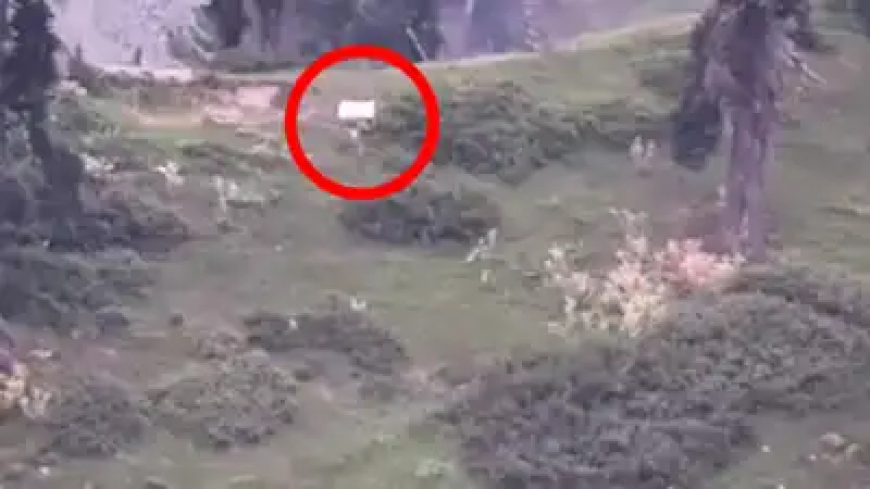India Raises White Flag at LOC After Clash
In a dramatic turn of events at the Line of Control (LOC), reports have emerged that Indian troops raised a white flag, signaling a surrender or request for a ceasefire, following an intense border confrontation with the Pakistan Army.

In a dramatic turn of events at the Line of Control (LOC), reports have emerged that Indian troops raised a white flag, signaling a surrender or request for a ceasefire, following an intense border confrontation with the Pakistan Army. This unprecedented incident has captured national and international attention, sparking debates on military strategy, regional stability, and border tensions.
-
India raises a white flag at the LOC after a border clash.
-
Pakistan Army maintains territorial control with a strategic response.
-
The incident reflects growing tensions and failed aggression from across the border.
-
Global analysts are watching South Asia’s military movements closely.
-
Ceasefire request considered a rare move in LOC history.
According to official and intelligence sources:
-
The incident occurred early in the morning when Indian forces reportedly attempted a minor incursion along a disputed section of the LOC.
-
In response, the Pakistan Army launched a strong and precise retaliation, preventing further advancement.
-
Within a few hours, Indian troops raised a white flag — a traditional sign indicating either surrender or a request for a ceasefire — signaling a halt in engagement.
Raising a white flag is internationally recognized under the Geneva Conventions as a symbol of truce or surrender. While it does not always mean a full military surrender, it often signals:
-
A request to stop active firing
-
The desire to retrieve injured soldiers or dead bodies
-
An intention to de-escalate without further engagement
In this case, Pakistan military sources confirm that the white flag was observed by surveillance drones and ground patrol units, and it was taken as a call to end hostilities in that zone.
The Pakistan Army responded professionally and maturely to the situation:
-
Ceased fire to prevent escalation after a white flag was observed
-
Issued a communication to Indian forces via established military channels
-
Maintained full control of the territory in question
-
Allowed safe retrieval of wounded Indian soldiers, demonstrating adherence to international law and military ethics
Pakistan’s response shows its commitment to peace, while also proving its readiness and capability to defend national sovereignty.

The Inter-Services Public Relations (ISPR) released a brief but strong statement:
“Pakistan Armed Forces remain fully prepared to defend every inch of our homeland. Any provocation across the Line of Control shall be met with a swift and resolute response. We seek peace, but not at the cost of our dignity and sovereignty.”
At the time of writing, India has not issued any official statement regarding the white flag or the skirmish. However, media reports suggest:
-
Tight security clampdown in nearby Indian-occupied regions
-
Attempts to suppress local reporting of the incident
-
Increased military movement in border sectors
-
International observers are questioning India's strategy in the region
This silence has only intensified global curiosity and media interest.
International military analysts and regional experts have noted:
-
This event shows a shift in military confidence in South Asia.
-
India’s strategy of cross-border intimidation may be weakening.
-
Pakistan’s strategic restraint and discipline are gaining global appreciation.
-
The need for peaceful resolution and diplomatic dialogue has never been clearer.
Even neutral defense think tanks have emphasized the importance of de-escalation and honest reporting to avoid miscommunication between two nuclear-armed neighbors.
Dr. Hassan Akbar, a South Asia defense analyst, stated:
“This white flag moment is not just symbolic — it’s a loud statement. It shows that India underestimated Pakistan’s defensive preparedness. It also shows Pakistan’s maturity in avoiding further escalation.”
Colonel (R) Nadeem Zafar, a military commentator, added:
“This is a major psychological win for Pakistan. Not a bullet more than needed was fired, and yet the message was loud and clear.”
Pakistan Army drones and surveillance footage reportedly captured the white flag being raised. While official footage is yet to be publicly released, ground soldiers stationed at forward posts confirmed visual observation of:
-
A clean white flag is waved using a stick or pole
-
Indian soldiers emerging from behind cover
-
No signs of continued aggression post-flag signal
Despite the temporary ceasefire and white flag, the Pakistan Army continues to:
-
Monitor all LOC sectors using advanced tech and boots on the ground
-
Maintain a high alert status in sensitive areas
-
Coordinate with local authorities for civilian protection
This white flag incident is more than just military news. It is:
-
A proof of Pakistan’s strength and restraint
-
A symbol of India’s tactical failure at the border
-
A reminder that peace is possible — but not guaranteed
-
A warning to aggressors that Pakistan will never tolerate threats to its sovereignty

 Ateeq Ur Rehman
Ateeq Ur Rehman